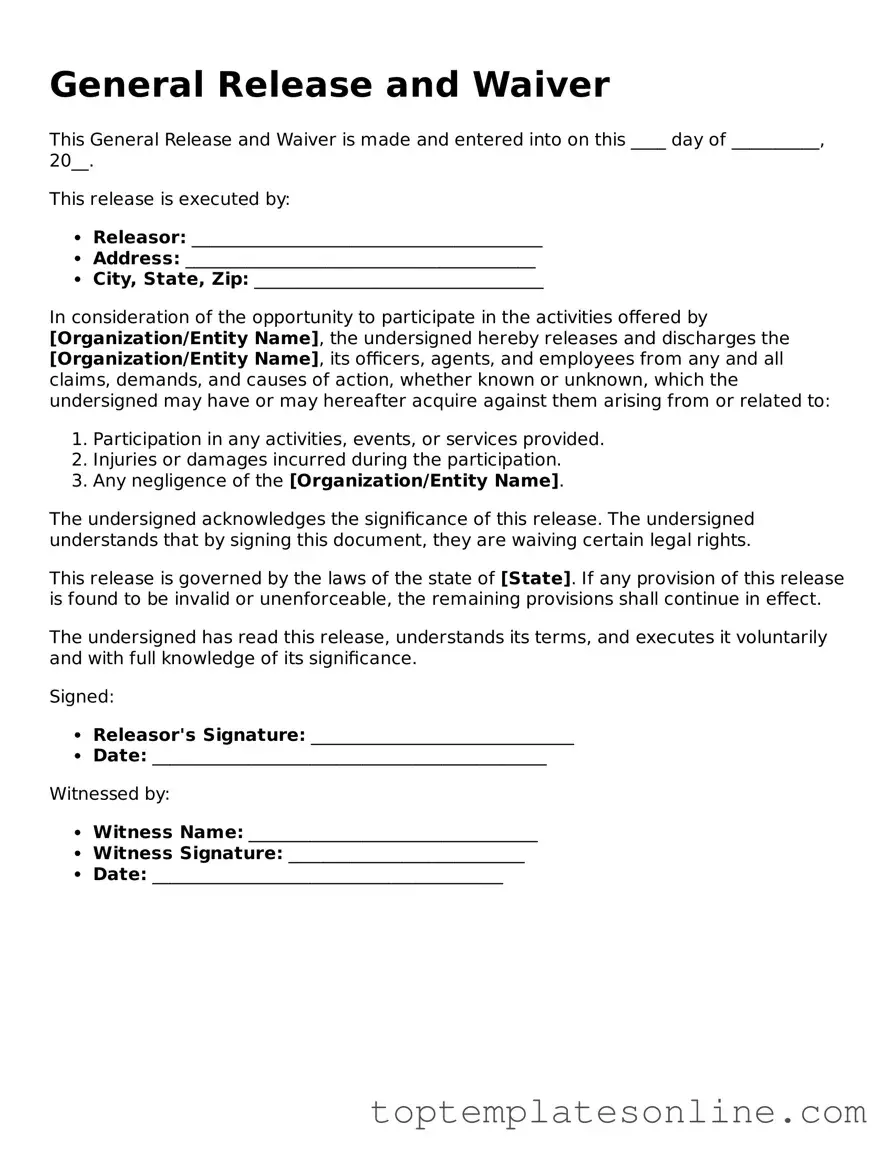Attorney-Approved General Release and Waiver Form
The General Release and Waiver form is a legal document that allows one party to release another from any future claims or liabilities. By signing this form, individuals acknowledge that they will not hold the other party responsible for any potential issues that may arise. Understanding this form is crucial for anyone involved in agreements where risk is present.
Customize General Release and Waiver Here
